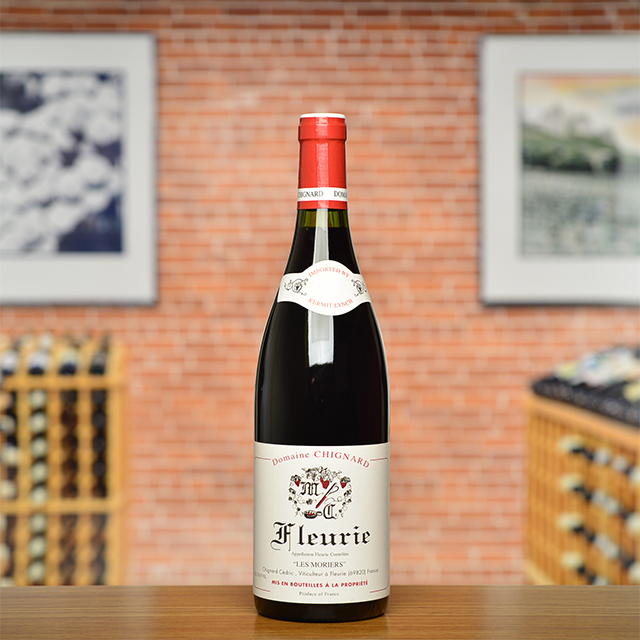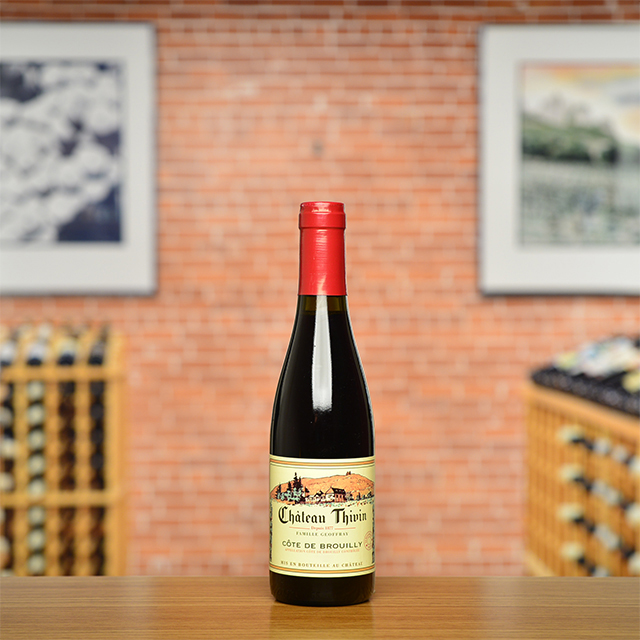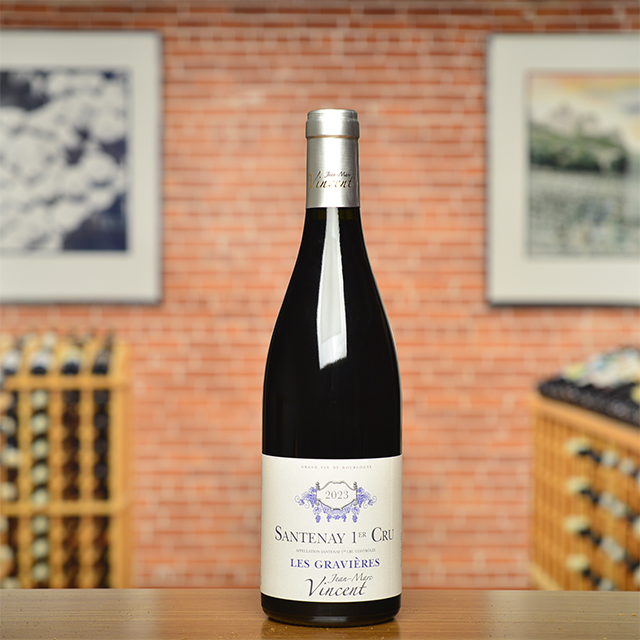Notify me
2021 Beaujolais-Villages “Les Grandes Terres”
Quentin Harel
For those of you still unacquainted, Quentin Harel is a newer addition to our Beaujolais portfolio. His wines first caught our eyes—or rather, our noses—when I chanced upon a bottle of his Morgon, a perfumed little beauty that stood no chance after being uncorked at the family dinner table one summer evening. Around the same time, my colleague Dixon informed me he had tasted a particularly juicy, downable Beaujolais-Villages from a young grower. Upon comparing notes, we realized Quentin was the man behind both bottles. As it turned out, he had recently taken the reins of the family domaine and begun making Beaujolais just the way we like it: farmed organically, vinified naturally with whole clusters, and bottled with minimal added sulfur. The nose, the palate, and the price encourage unbridled quaffing.
—Anthony Lynch
| Wine Type: | red |
| Vintage: | 2021 |
| Bottle Size: | 750mL |
| Blend: | Gamay |
| Appellation: | Beaujolais Villages |
| Country: | France |
| Region: | Beaujolais |
| Producer: | Quentin Harel |
| Winemaker: | Quentin Harel |
| Vineyard: | 7 to 70 years, 40 years average; 3 ha |
| Soil: | Clay, Limestone |
| Aging: | Aged 12 months in 70 hL cement tank and 20 hl enamel tank |
| Farming: | Organic (certified) |
| Alcohol: | 12.5% |
More from this Producer or Region

2023 Chénas “Les Blémonts”
France | Beaujolais
Structured yet full of energy, with notes of blueberry, spice, and other things nice.

2021 Brouilly
France | Beaujolais
A generous dash of plump, sun-ripened fruit enveloping a granite core.

2025 Beaujolais Nouveau
France | Beaujolais
Limited Quantities! ~ Valentin Montanet’s rendition has guts, but it sure is kickin’, too, with loads of cherries and heaps of joy.

2024 Fleurie “Les Moriers”
France | Beaujolais
Chignard’s Les Moriers, coming from their old vines in the heart of this parcel, has distinction a-plenty, with a great mouthful of Gamay fruit to boot.

2024 Côte de Brouilly HALF BOTTLE
France | Beaujolais
Loaded with wild fruit, spice, and crunchy minerality, Thivin's Côte de Brouilly marries to perfection with soulful cuisine.

2024 Côte de Brouilly
France | Beaujolais
Brambly and mineral, this bottling exudes both the convivial charm of Gamay and the crunchy intensity of the Côte de Brouilly.

2024 Morgon “Vieilles Vignes”
France | Beaujolais
Leave it to Breton to take summer heat and turn it into a light summer breeze in a glass.

2023 Fleurie
France | Beaujolais
Light and living, charged with herbs, cranberry, and strawberry.

2023 Chénas “Chassignol”
France | Beaujolais
A finessed, mineral-driven beauty from hundred-year-old vines at the highest point in Chénas.

2024 Beaujolais MAGNUM
France | Beaujolais
This Beaujolais offers the drinkability of the most effusive Morgons with the frankness of a chiseled Moulin-à-Vent.
About The Producer
Quentin Harel
About The Region
Beaujolais

After years of the region’s reputation being co-opted by mass-produced Beaujolais Nouveau and the prevalence of industrial farming, the fortunes of vignerons from the Beaujolais have been on the rise in the past couple of decades. Much of this change is due to Jules Chauvet, a prominent Beaujolais producer who Kermit worked with in the 1980s and arguably the father of the natural wine movement, who advocated not using herbicides or pesticides in vineyards, not chaptalizing, fermenting with ambient yeasts, and vinifying without SO2. Chief among Chauvet’s followers was Marcel Lapierre and his three friends, Jean Foillard, Guy Breton, and Jean-Paul Thévenet—a group of Morgon producers who Kermit dubbed “the Gang of Four.” The espousal of Chauvet’s methods led to a dramatic change in quality of wines from Beaujolais and with that an increased interest and appreciation for the AOC crus, Villages, and regular Beaujolais bottlings.
The crus of Beaujolais are interpreted through the Gamay grape and each illuminate the variety of great terroirs available in the region. Distinguishing itself from the clay and limestone of Burgundy, Beaujolais soils are predominantly decomposed granite, with pockets of blue volcanic rock. The primary vinification method is carbonic maceration, where grapes are not crushed, but instead whole clusters are placed in a tank, thus allowing fermentation to take place inside each grape berry.
Much like the easy-going and friendly nature of many Beaujolais vignerons, the wines too have a lively and easy-drinking spirit. They are versatile at table but make particularly good matches with the local pork sausages and charcuterie. Though often considered a wine that must be drunk young, many of the top crus offer great aging potential.
More from Beaujolais or France
2021 Côte de Brouilly
Alex Foillard France | Beaujolais
2025 Beaujolais Nouveau
La Sœur Cadette France | Beaujolais
2022 Régnié
Guy Breton France | Beaujolais
2021 Brouilly
Alex Foillard France | Beaujolais
2023 Chénas “Vibrations”
Domaine Thillardon France | Beaujolais
2024 Fleurie
Guy Breton France | Beaujolais
2023 Chénas “Les Blémonts”
Domaine Thillardon France | Beaujolais
2023 Fleurie
Jean Foillard France | Beaujolais
2024 Morgon “La Roche Pilée”
Jean-Paul et Charly Thévenet France | Beaujolais
2018 Brouilly
Alex Foillard France | Beaujolais
2024 Morgon “Vieilles Vignes”
Jean-Paul et Charly Thévenet France | Beaujolais
2024 Côte-de-Brouilly
Nicole Chanrion France | Beaujolais
2021 Côte de Brouilly
Alex Foillard France | Beaujolais
2025 Beaujolais Nouveau
La Sœur Cadette France | Beaujolais
2022 Régnié
Guy Breton France | Beaujolais
2021 Brouilly
Alex Foillard France | Beaujolais
2023 Chénas “Vibrations”
Domaine Thillardon France | Beaujolais
2024 Fleurie
Guy Breton France | Beaujolais
2023 Chénas “Les Blémonts”
Domaine Thillardon France | Beaujolais
2023 Fleurie
Jean Foillard France | Beaujolais
2024 Morgon “La Roche Pilée”
Jean-Paul et Charly Thévenet France | Beaujolais
2018 Brouilly
Alex Foillard France | Beaujolais
2024 Morgon “Vieilles Vignes”
Jean-Paul et Charly Thévenet France | Beaujolais
2024 Côte-de-Brouilly
Nicole Chanrion France | Beaujolais
Kermit once said...

Kermit once said...
When buying red Burgundy, I think we should remember:
1. Big wines do not age better than light wine.
2. A so-called great vintage at the outset does not guarantee a great vintage for the duration.
3. A so-called off vintage at the outset does not mean the wines do not have a brilliant future ahead of them.
4. Red Burgundy should not taste like Guigal Côte-Rôtie, even if most wine writers wish it would.
5. Don’t follow leaders; watch yer parking meters.
Inspiring Thirst, page 174


















